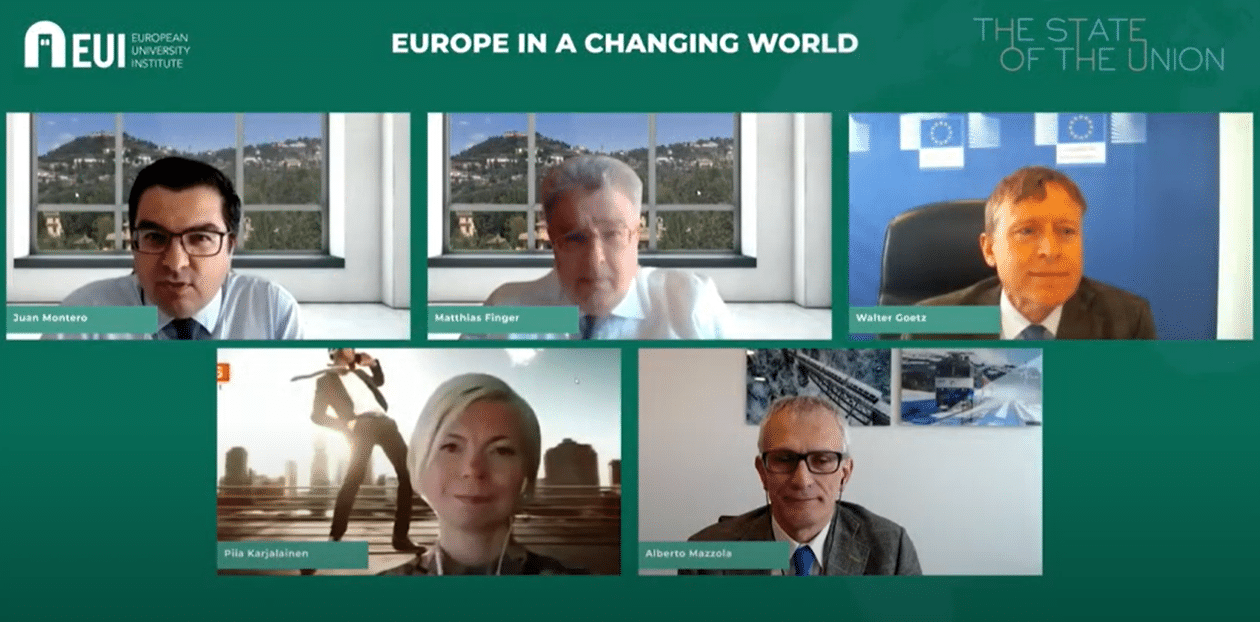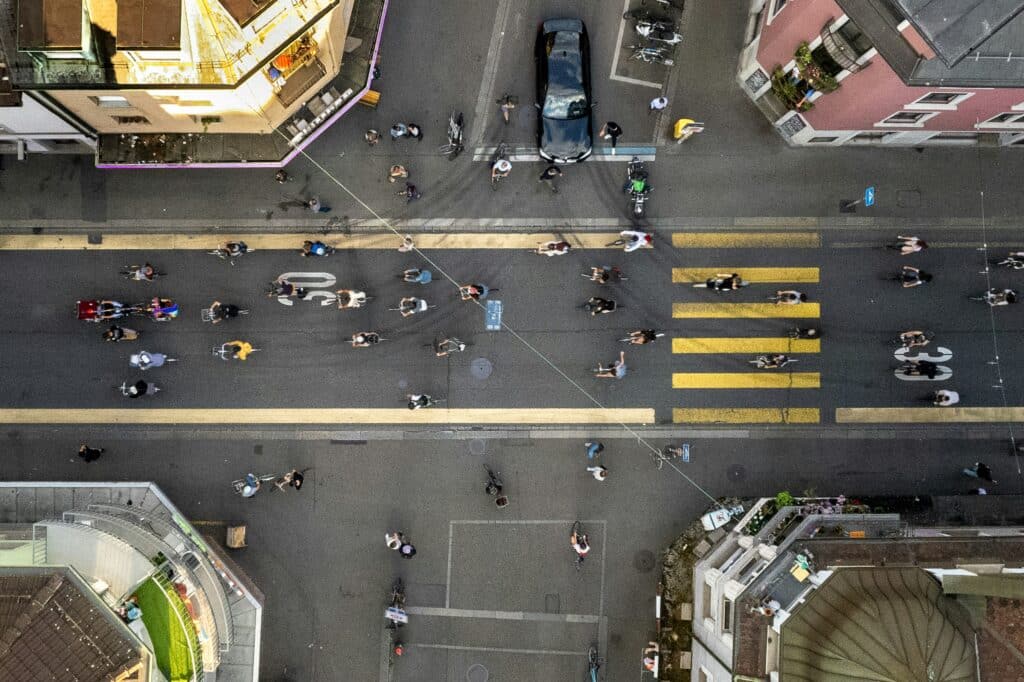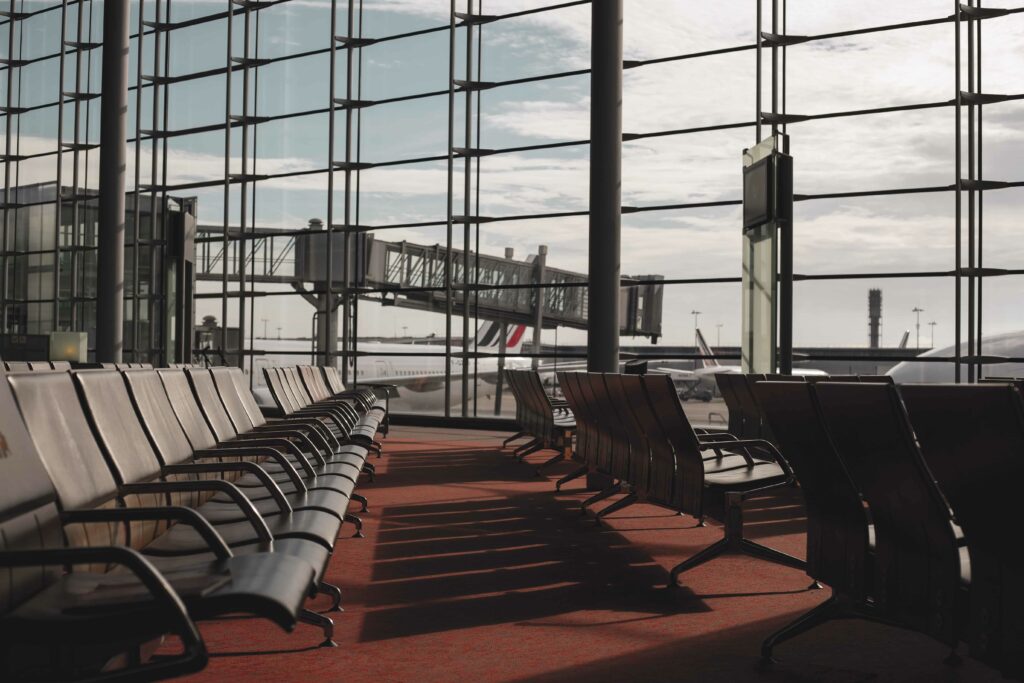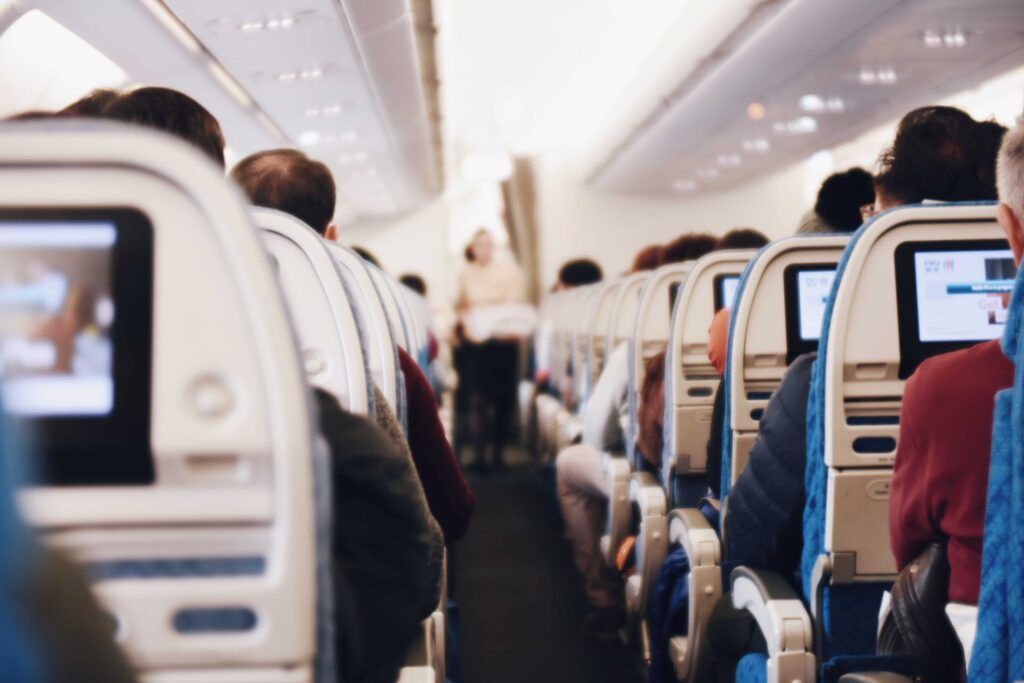FSR-Transport discusses the role of modal shift in decarbonising transport at EUI annual conference The State of the Union
The Transport Area of the Florence School of Regulation put the spotlight on the role of modal shift in achieving transport decarbonisation objectives during its fringe event on 6th May 2021 in the framework of the tenth anniversary of the EUI's annual flagship conference The State of the Union.
This year’s edition of The State of the Union (SOU) marked the tenth anniversary of the European University Institute’s flagship conference, which over the past decade has firmly established itself as a key forum for discussion and debate on the most pertinent issues facing Europe and Europeans: from rising concerns over global commons and the climate emergency, a shifting economic and geopolitical power balance, major challenges to multilateralism, and the ongoing global battle against COVID-19.
As part of the official SOU fringe events programme, FSR-Transport put the spotlight on The Role of Modal Shift in Achieving Transport Decarbonisation Objectives. The shift of passenger and goods traffic away from less environmentally sound modes, such as road in particular, but also aviation, towards the greenest modes, namely rail and inland waterways, constitutes a central pillar of the EU transport decarbonisation strategy. What is more, the topic of modal shift has been a key priority on the EU legislative agenda during 2021 as the European Year of Rail. It is, therefore, no coincidence that the panel discussion, moderated by Professor Juan Montero, provided a timely platform for debate on the technical and regulatory barriers, as well as the possible solutions and legislative opportunities to turn the EU’s modal shift objectives into reality.
Watch the full recording on the EUI’s YouTube channel

The European Green Deal strives to transform Europe into the world’s first carbon neutral continent by 2050: a commitment, which will necessitate significant transformations across all sectors of the economy. For the transport sector, which accounts for a quarter of the EU’s total greenhouse gas emissions, meeting this ambition will require a 90% reduction in CO2 emissions by mid-century. The recently published Sustainable and Smart Mobility Strategy stresses that ‘greening mobility must be the new license for the transport sector to grow’.
The EU’s modal shift strategy sets out that rail freight traffic should increase by 50% by 2030 and double by 2050, whereas transport by inland waterways and short sea shipping should increase by 25% by 2030 and by 50% by 2050. High-speed rail traffic is envisaged to double by 2030 and triple by 2050. The achievement of these targets will require measures to manage better, and to increase the capacity of railways and inland waterways.
Taking the urban perspective, Piia Karjalainen, Secretary General of the Mobility as a Service (MaaS) Alliance, underlined the central role of MaaS in optimising the use and capacity of the different transport modes through the provision of information on transport options to users, and thanks to the ability to better understand users’ preferences. Here technology was stressed as a key enabling tool for users to make informed- and more environmentally friendly travel choices (e.g., choosing a journey based on the CO2 footprint and other environmental impacts). Its strong environmental promise, coupled with the possibility to improve the quality of services provided to users, have allowed MaaS to gain considerable political support over the past decade, including on the EU arena.
Alberto Mazzola, Executive Director of the Community of European Railways and Infrastructure Companies (CER), on the other hand, reminded listeners that the concept of ‘modal shift’ dates back to Commissioner De Palacio’s 2001 White Paper and that 20 years later, today we have a good occasion to take stock on progress made and the gaps to be filled going forward. Pointing to the fact that 4% of the railway network is congested today, Mazzola stressed the need to increase railway capacity in order to advance modal shift objectives. In particular, the need for both physical and digital infrastructure investments will be necessary to ensure a high-speed network, connecting all capitals and major cities of Europe. Rail will also need to become multimodal, and closely integrated with other modes, whereby MaaS can and will play a key role in achieving this.
Walter Goetz, Head of Cabinet of Transport Commissioner Adina Valean, underlined that while all modes of transport have a place in the mobility system of the future, all of them will have to become more sustainable and more widely available in a multimodal transport system for citizens and enterprises. To this end, the right incentives will have to be guaranteed. A package of measures is already is in planning stages, whereby in the second half of 2021 the Commission will conduct a TEN-T review to improve the effectiveness of the TEN-T system, and a new legislative proposal for the reform of the Combined Transport Directive will be tabled in 2022. What is more, the Electronic Freight Transport Information Systems (EFTIs) Regulation implementing rules, planned for 2023, will provide harmonised specifications for interoperable IT systems across modes, which will enable instant real-time exchanges among all actors in the logistics chain. This, in turn, will optimise freight transport flows and significantly reduce the costs for multimodal information exchange. On the passenger rail front, the Commission will be launching an action plan to remove barriers for international cross-border passenger transport, such as rolling stock supplying costs, capacity allocation, access charges, and ticketing, among others.
Taking a more holistic approach, Professor Matthias Finger, Director of FSR-Transport emphasised the existence of three main pre-conditions for modal shift to materialise, all of which would need to be pursued in parallel. Firstly, investments in physical infrastructure (links, nodes and bottlenecks) will be key, and these will need to be channelled into both high-speed, but also night train services. Of equal importance will be investments into multimodality hubs, the first and last mile connections. The second pre-condition is the creation of a level playing, by means of internalising the externalities of each transport mode. This, in turn, will entail a regulatory effort to enact cost-reflective pricing. Last but not the least, the digital layer will have to be guaranteed by means of regulation and adequate investments. Digitalisation stands to enable efficiency gains, better system coordination, as well as a better customer experience.







